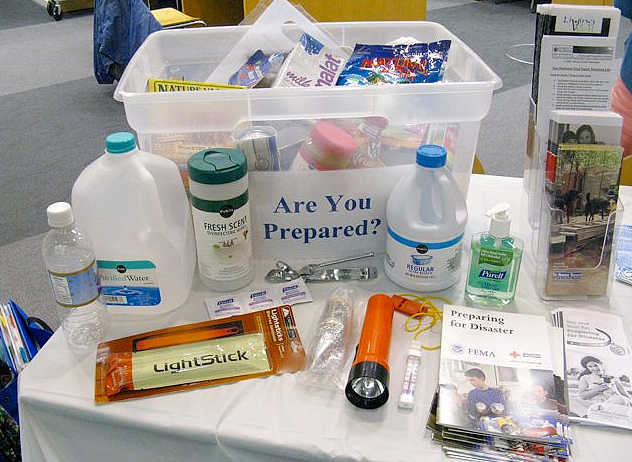Over the past few decades, the freight and transportation industry has undergone massive changes. The rapid globalization of the world requires rethinking freight operations, including how you manage freight audit and payment (FAP), meaning being more cost-efficient and data-driven than ever before. However, many resources are provided to small business owners who manage a fleet that ultimately helps them focus on more important aspects of their business.
Partnering With A PEO
When you partner with a professional employer organization (PEO), they take on the administrative burdens that companies don’t have the time or expertise to manage effectively, including:
- Human resources
- Benefits
- Payroll and tax
- Risk management
This allows you to put your focus back on client relationships, building an effective team, and growing your profits. In addition, a PEO helps you reduce costs, limit your business risk, and save time and money. Continue reading to learn more about each product offering through a PEO.
Human resources
Human resources are one of the most time-consuming components for any transportation company to manage. From recruiting and retaining employees to training employees to tracking vacation time, there are many functions when it comes to human resources management. However, you didn’t start your business to become an HR expert. When you outsource your HR functions to a PEO, it allows you to spend more time growing your business and less time on human resource management.
Managing a fleet is challenging enough in itself. On top of that, retaining and attracting quality drivers amidst the COVID-19 pandemic makes it even more complicated. A report by the American Trucking Association (ATA) stated that the truck driver shortage could reach 160,000 by 2030. When you outsource your HR functions to a PEO, they take on the burden of retaining and attracting top talent.
How much time do you currently spend on writing a job ad or going through resumes? PEOs help you recruit faster and easier by doing all the legwork before an interview takes place, so you can focus on choosing from a pool of qualified candidates.
Attracting quality employees to join your growing business is one challenge. Ensuring that you can retain your top talent is another. From improving skills to making employees feel valued, employee education and other measures are powerful retention tools. A PEO can help you retain employees and limit turnover costs by consulting with you on:
- Team building activities
- Employee reward programs
- Employee incentives
- Survey tools
- Suggestion systems
Finally, a PEO can perform human resource audits to review your current HR policies, procedures, documentation, and systems. Conducting HR audits help your business reduce costs and improve its HR functions in a fraction of the time.
Benefits
As a business owner, it’s crucial to keep and attract quality employees to continue growing your business. One of the easiest ways to retain and attract top talent is by offering a quality benefits package. An employee benefits package includes all the non-wage ways a company compensates its employees. They’re the little perks and additives that employees receive as a standard part of the job offer. A basic employee benefits package includes:
- Insurance
- Retirement plans
- Paid time off
- Additional compensation
With an extreme shortage of truck drivers, it’s crucial to provide your employees with a quality benefits package to stand out from the competition and retain and attract top talent. Organizations that aren’t leveraging a PEO or an online benefits platform are likely wasting valuable time and energy. A PEO works with employers to help them decide which benefits make the most sense for their business operations, employees, and bottom line.
In addition, partnering with a PEO offers you more flexibility, control of premiums, access to data and networks, and options you can’t find elsewhere.
Payroll
Managing payroll and tax filings can be one of the most time-consuming and challenging tasks for small business owners. Between time tracking, tax calculations, payroll compliance, and every other payroll function, there’s too much to do and not enough time to manage properly.
If you’re struggling in this area of your business, it might be time to consider outsourcing payroll administration to a PEO. Within this partnership, you gain access to proprietary technology, dedicated support, and operational efficiencies to enjoy the benefits of a large business without all the excess. Did you know that as many as 40% of small businesses incur an average of $845 in IRS penalties each year?
Fear no more. A PEO keeps you up to date with the complex tax filing requirements as they inevitably change and complicate your payroll process. Additionally, you and your employees have access to payroll information and tax information anytime, anywhere. Let’s say your drivers are on the road and need to check their payroll information. They can access it right from their phone. Partnering with a PEO will save you time and give you peace of mind through expert payroll management services.
Risk management
As a small business owner in the freight industry, this is perhaps the most important and relevant service a PEO provides. Many small business owners struggle to avoid the risks associated with workers’ compensation and workplace hazards. The good news is that there are several ways to protect businesses against these dangers, but you didn’t start your business to become a risk analyst. That’s exactly why you should outsource your risk management functions to a PEO. A PEO provides you and your business with the following:
- Workplace safety strategies
- Workers’ compensation
- Los prevention strategies
- Workplace noise monitoring
- Workplace injury reporting and nurse triage
- Fleet management
- Safety inspections
Whether in a monopolistic state where workers’ compensation is funded through the state or not, a PEO is here to provide you with the support you need. PEOs workers’ compensation management experts help employers control costs and avoid the notable impacts of work-related injuries. Should one of your employees get injured on the job, experts are there to help you throughout the entire process.
Workers’ compensation insurance costs can range from less than $100 to thousands of dollars per employee per year. Fortunately, if you partner with a PEO, they help you save money and prevent your workers from being injured on the job by implementing cost containment and loss prevention strategies.
Some PEOs have the capabilities to provide employers with fleet management. This product allows companies to organize and coordinate work vehicles to improve efficiency, reduce costs, and monitor unsafe driving habits. As a business owner who must manage a fleet of trucks, it’s vital that you have rules and policies in place to ensure all employees stay safe and compliant.
GMS Is The Perfect Match For You
If any of the pain points from above hit home with you, it’s time to outsource some or all of your HR functions to a PEO like GMS. At GMS, we have it all. It’s configurable to your business needs. If you need help with payroll, we’ve got you covered. If you only need help with benefits, we’ve got that covered as well. From handling the entire payroll process to providing you with top candidates to ensuring your fleet stays compliant, GMS does it all. Don’t let the shortage of drivers associated with the freight industry and HR functions keep you up at night. Contact us today to learn more.

 Although it’s still warm and the swimming pools are still open throughout Ohio, you’ve probably already started thinking about what needs to be done to prepare for the cold months ahead.
Although it’s still warm and the swimming pools are still open throughout Ohio, you’ve probably already started thinking about what needs to be done to prepare for the cold months ahead.



